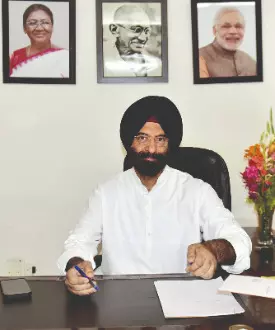Monsoon pushes artificial rain proj to end of August

New Delhi: With monsoon drenching the capital, Delhi’s pilot cloud seeding project to curb air pollution was deferred to the end of August, Delhi Environment minister Manjinder Singh Sirsa said on Tuesday. The minister announced the change in schedule during a press conference here, citing ongoing rains that may not provide ideal conditions and could fail to yield the desired results.
Last week, he revealed that the initial time window for cloud seeding was set between July 4 and July 11, as conditions were not suitable before July 3.
However, following consultations with meteorological experts and in light of the current weather patterns, the project team proposed a revised window — August 30 to September 10 — when the monsoon is expected to recede.
Sirsa expressed confidence that this new period is likely to offer more suitable cloud formations for the seeding process. The cloud seeding sorties will be conducted using aircraft VT-IIT (Cessna 206-H), fully equipped with cloud seeding instruments.
According to the tentative flight plan, the aircraft will cover Alipur, Bawana, Rohini, Burari, Pavi Sadakpur, and regions along the Eastern Peripheral Expressway, including areas near the Kundli border zones, identified for their combination of low-altitude cloud potential and high pollution retention.
The operation will be carried out by the Department of Aerospace Engineering, IIT Kanpur, which has prior experience in similar airborne missions. The crew has undergone training, and all necessary DGCA certifications and permissions were obtained, he said. The cloud seeding process involves releasing hygroscopic particles, such as sodium chloride, into clouds to trigger precipitation. “This not only helps generate rain but also improves pollutant washout in the lower atmosphere,” said Sirsa. The DGCA laid down stringent conditions: the flights must operate under Visual Flight Rules (VFR), with full visibility of terrain and obstacles. No aerial photography is permitted, and the aircraft must stay within approved airspace unless further clearances are secured. Operators are also required to inform the DGCA of any unusual incidents and follow all safety and documentation protocols under the applicable Civil Aviation Requirements (CAR).



